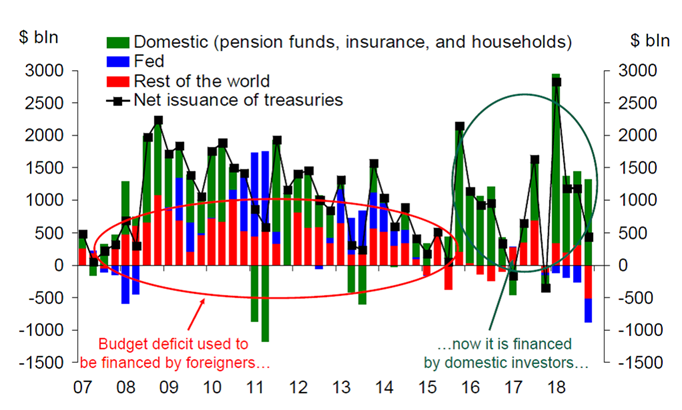When Uncle Sam’s income (i.e. tax revenue) is less than his spending he runs a budget deficit. The Treasury Department sells Bills, Notes and Bonds (i.e. “Treasuries”) to cover the shortfall.
Who are the buyers? Who enables the federal credit card?
Historically the gap was filled from overseas. Individuals would buy Treasuries due to their safety and security. It’s the safest credit in the world. Governments that ran trade surpluses relative to the U.S. viewed Treasuries as a safe place to park cash.
When the 2008 financial crisis hit The Fed stepped in. Increased demand for Treasuries pushed up their prices which, in turn, lowered rates. Recall that bond prices and interest rates have an inverse relationship. This program of Quantitative Easing drastically expanded The Fed’s balance sheet. Coincidentally the unwinding of QE is one of the culprits behind the current upward direction of interest rates.
Today we see domestic sources as the primary lenders to the federal government. Institutions like pension funds and insurance companies buy Treasuries to match obligations such as retirement and death benefits. Individuals? Their motivation is less clear.


Leave A Comment